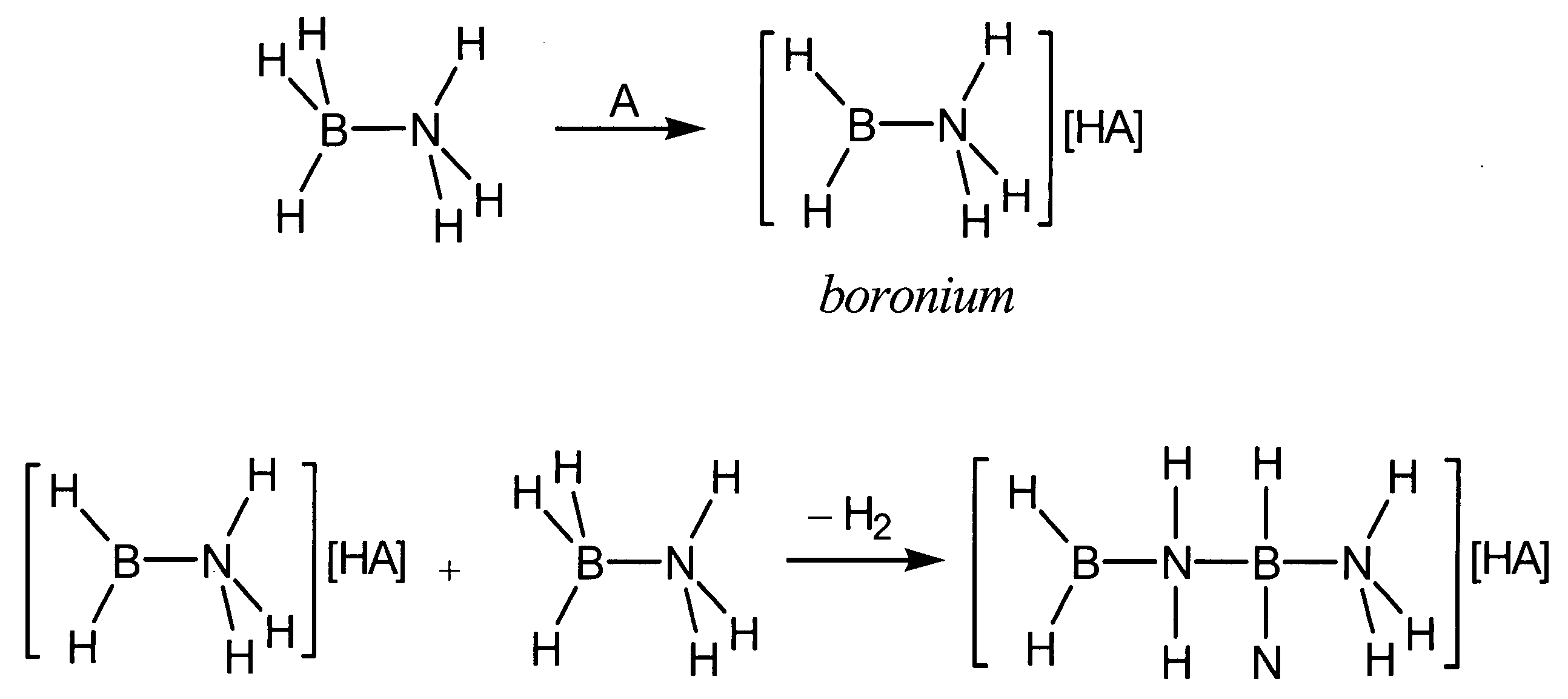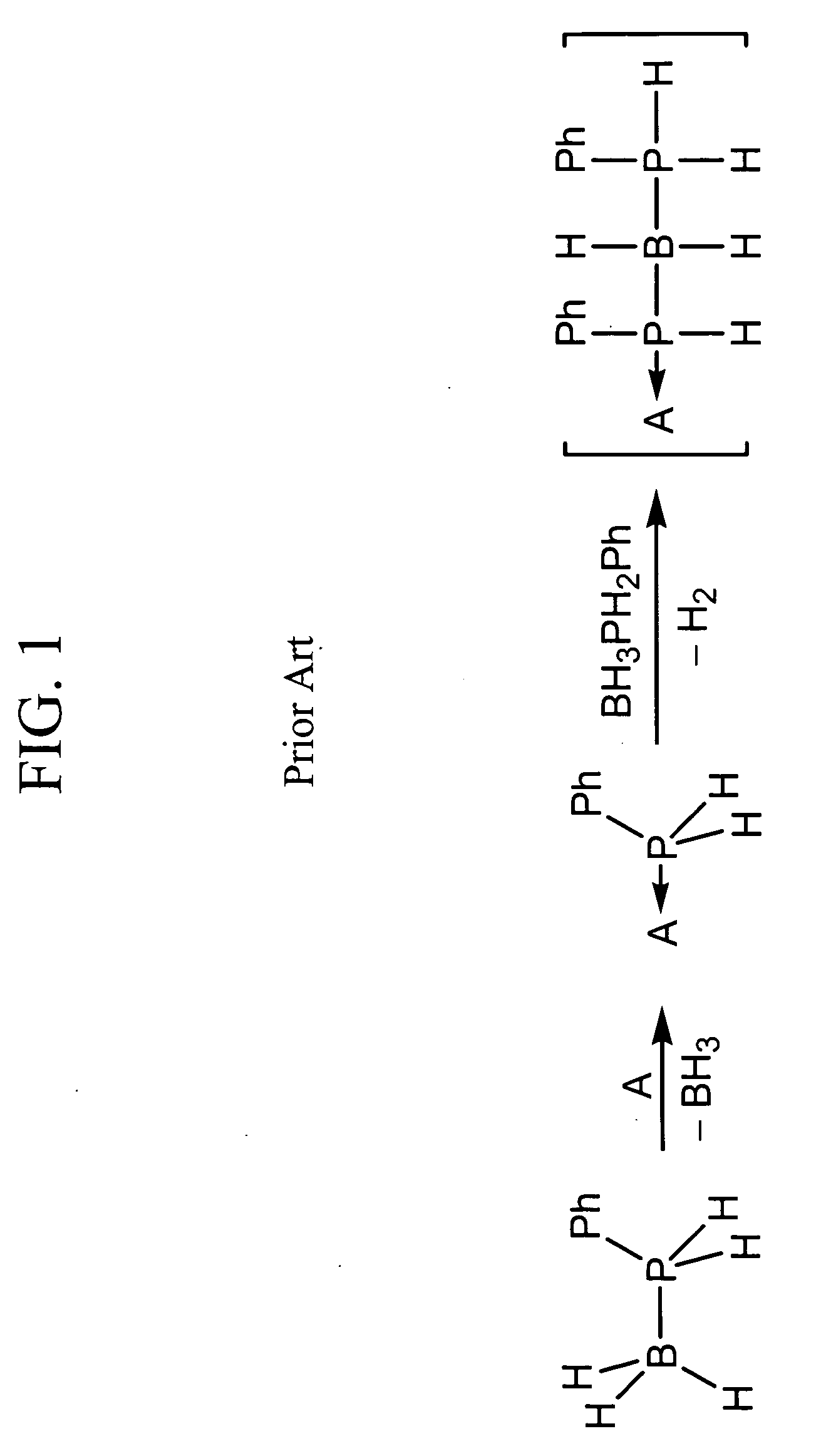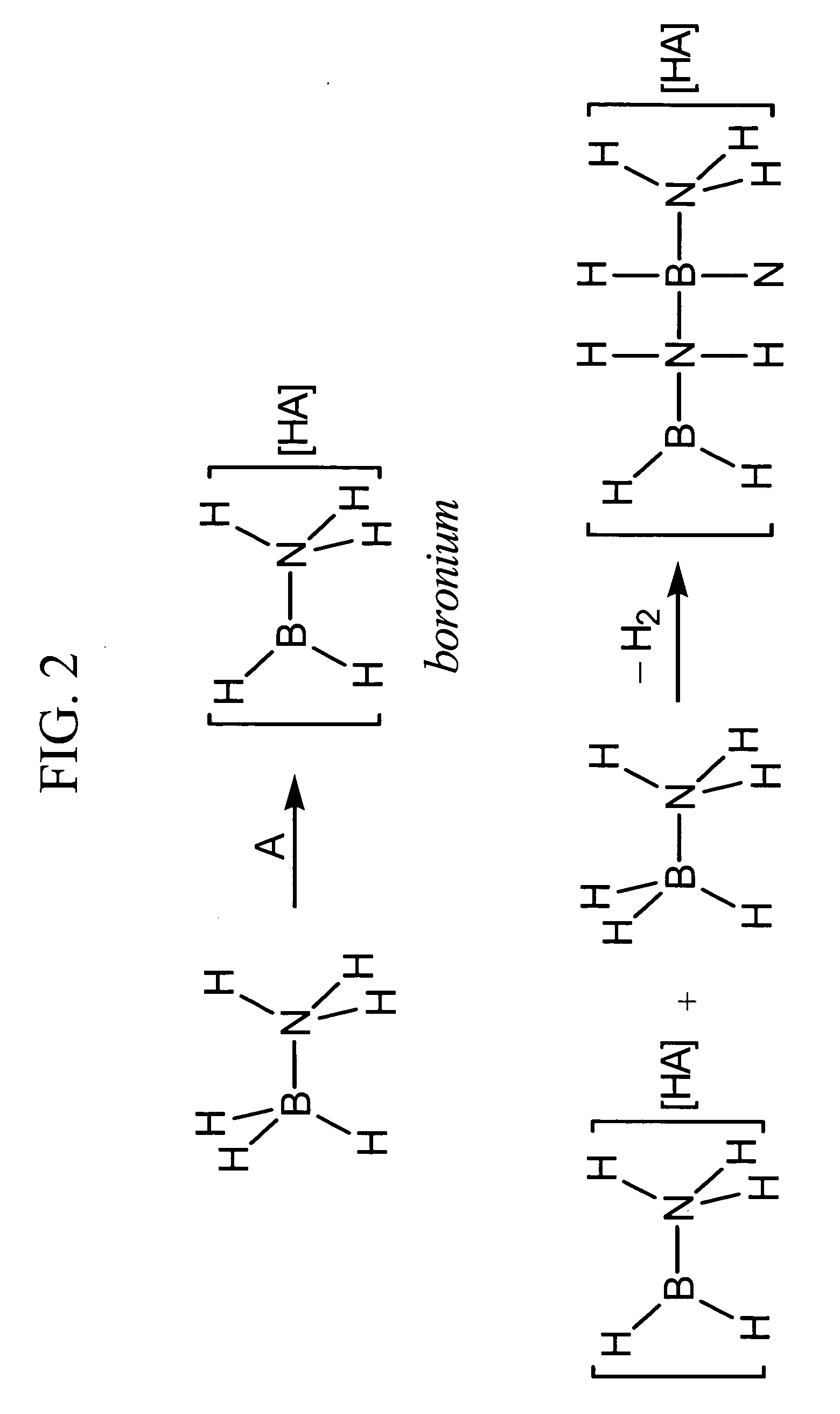Acid-catalyzed dehydrogenation of amine-boranes
- Summary
- Abstract
- Description
- Claims
- Application Information
AI Technical Summary
Benefits of technology
Problems solved by technology
Method used
Image
Examples
example 1
[0027] In a typical reaction, 0.1 mmol of an amine-borane, such as, for example, ammonia-borane (H3NBH3) or an alkyl-substituted variant isobutylamine-borane (iBuH2NBH3) was dissolved in approximately 0.5 mL dimethoxyethane or toluene, forming a 0.2 M solution. A solution of 0.1 equivalent acid was added to the amine-borane solution. The reaction mixture was then heated at 80° C. for 24 hours. After this time, all of the ammonia-borane had been consumed and both soluble and insoluble products had formed. The soluble products include borazine and cyclotriborazane.
[0028] For comparison purposes, an uncatalyzed thermolysis study was conducted in which a dimethoxyethane solution of ammonia-borane (0.2 M) was monitored at 80° C. over 24 hours using 11B NMR. After 2 hours, a small amount of cyclotriborazane was observed in addition to unreacted ammonia-borane. The cyclotriborazane subsequently lost hydrogen slowly to form borazine (B3N3H6). After 24 hours a significant amount (about 50%)...
example 2
[0031] When 10 mmol ammonia-borane is dissolved in 1 mL dimethoxyethane to form a 10 M solution and between 1 mol % and 0.5 mol % B(C6F5)3 is added, the reaction proceeds much more quickly than in the 0.2 M solution. In addition to some white precipitate ([H2B—NH2]n), borazine is observed as a major product. Therefore when a concentrated solution (>5 M) is used, more extensive dehydrogenation is achieved with evolution of between 1 and 2 equivalents of H2.
example 3
[0032] When a dilute (5 mol % B(C6F5)3, but the reaction is not heated above 40° C., the product distribution also differs. In this case, almost no borazine is formed. Therefore, lower reaction temperatures suppress formation of borazine.
PUM
| Property | Measurement | Unit |
|---|---|---|
| Temperature | aaaaa | aaaaa |
| Temperature | aaaaa | aaaaa |
| Temperature | aaaaa | aaaaa |
Abstract
Description
Claims
Application Information
 Login to View More
Login to View More - R&D
- Intellectual Property
- Life Sciences
- Materials
- Tech Scout
- Unparalleled Data Quality
- Higher Quality Content
- 60% Fewer Hallucinations
Browse by: Latest US Patents, China's latest patents, Technical Efficacy Thesaurus, Application Domain, Technology Topic, Popular Technical Reports.
© 2025 PatSnap. All rights reserved.Legal|Privacy policy|Modern Slavery Act Transparency Statement|Sitemap|About US| Contact US: help@patsnap.com



